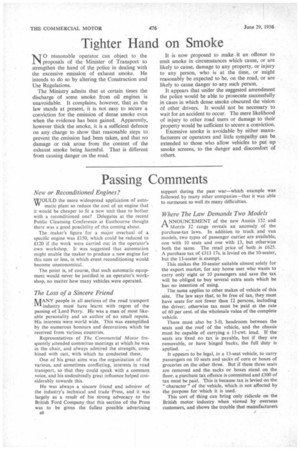Tighter Hand on Smoke
Page 42

If you've noticed an error in this article please click here to report it so we can fix it.
N(3 reasonable operator can object to the proposals of the Minister of Transport to strengthen the hand of the police in dealing with the excessive emission of exhaust smoke. He intends to do so by altering the Construction and Use Regulations.
The Ministry admits that at certain times the discharge of some smoke from oil engines is unavoidable. It complains, however, that as the law stands at present, it is not easy to secure a conviction for the emission of dense smoke even when the evidence has been gained. Apparently, however thick the smoke, it is a sufficient defence on any charge to show that reasonable steps to prevent the emission had been taken, and that no damage or risk arose from the content of the exhaust smoke being harmful. That is different from causing danger on the road. It is now proposed to make it an offence to emit smoke in circumstances which cause, or are likely to cause, damage to any property, or injury to any person, who is at the time, or might reasonably be expected to be, on the road, or are likely to cause danger to any such person.
It appears that under the suggested amendment the police would be able to prosecute successfully in cases in which dense smoke obscured the vision of other drivers. It would not be necessary to wait for an accident to occur. The mere likelihood of injury to other road users or damage to their property would be sufficient to secure a conviction.
Excessive smoke is avoidable by either manufacturers or operators and little sympathy can be extended to those who allow vehicles to put up smoke screens, to the danger and discomfort of others.
















































































































































